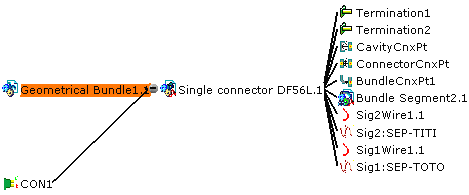![]()
This task shows how to use the Related Objects viewer to navigate through the objects connected to the selected object.
![]()
The Related Objects command displays all the bundle segments of a branch, even those which are not connected. The reason is that the command displays the contents of the document. All the bundle segments inside a multi-branchable document belong to the same CATPart document.
You can focus on an object and see how it was constructed
via its related objects.
This command also identifies the parent, any children or
connected objects and the relationship between objects. It is available
when none of the icons of the workbench are selected, that is to say when
Select
![]() is active.
is active.
| Accessing Related Objects can be done in two ways: | |||||||||||||||||||||||||||||||||||||||||||||
|
|
|
||||||||||||||||||||||||||||||||||||||||||||
|
|
|||||||||||||||||||||||||||||||||||||||||||||
|
|
|||||||||||||||||||||||||||||||||||||||||||||
The different options available are:
|
|||||||||||||||||||||||||||||||||||||||||||||
| On a complex electrical system, the 3D view allows you to limit display to a specific area thus enlightening the information regarding this area. | |||||||||||||||||||||||||||||||||||||||||||||
-
Select an object: Geometrical Bundle1.1 for example.
-
Click Related Objects
 .
.The Current Selection dialog box appears. The geometry area and the specification tree are reframed on the object selected. 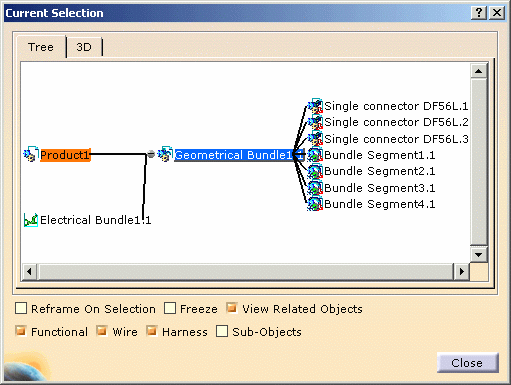
-
Select the Bundle Segment4.1 in this window.
The dialog box focuses on the object selected: Bundle Segment4.1 (center of the window) and shows the parent and the connected objects: - On the left is the parent object (Assembly meaning).
It represents the container object. - On the right are the children objects (Assembly meaning), connected to the Bundle Segment4.1. They represent the contents.
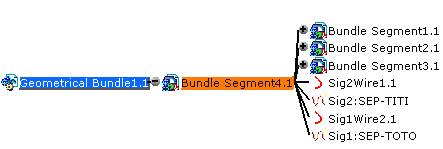
This window shows the following: - The bundle segments assembly within the geometrical bundle
- The Bundle Segment4.1 is connected to three bundle segments
- The Bundle Segment4.1 contains two wires and their associated signal.
- On the left is the parent object (Assembly meaning).
-
Select the Sig2:SEP-TITI.
The geometry area is reframed on the signal and it shows: - The signal extremities with the functional connectors
- The wire that realizes the signal
- The harness objects: the physical connectors that correspond to the signal extremities as well as the bundle segments, and the wire they contain.
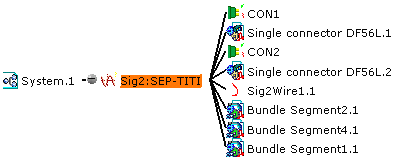
-
Click the 3D tab to display the geometry.
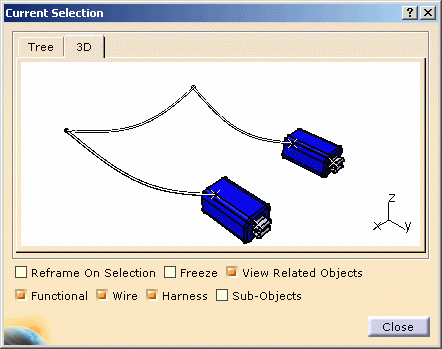
-
Close the dialog box to exit the Related Objects viewer.







